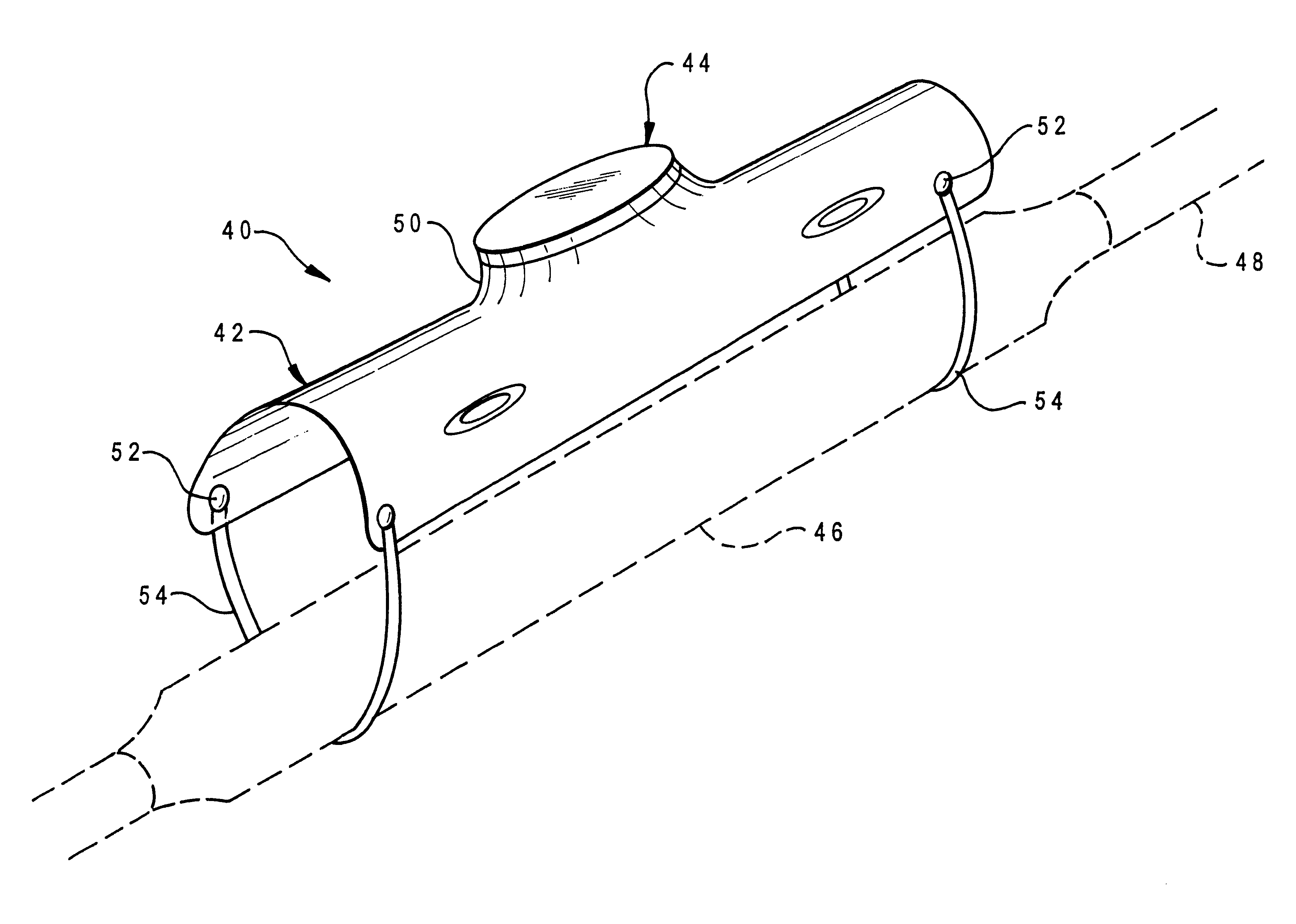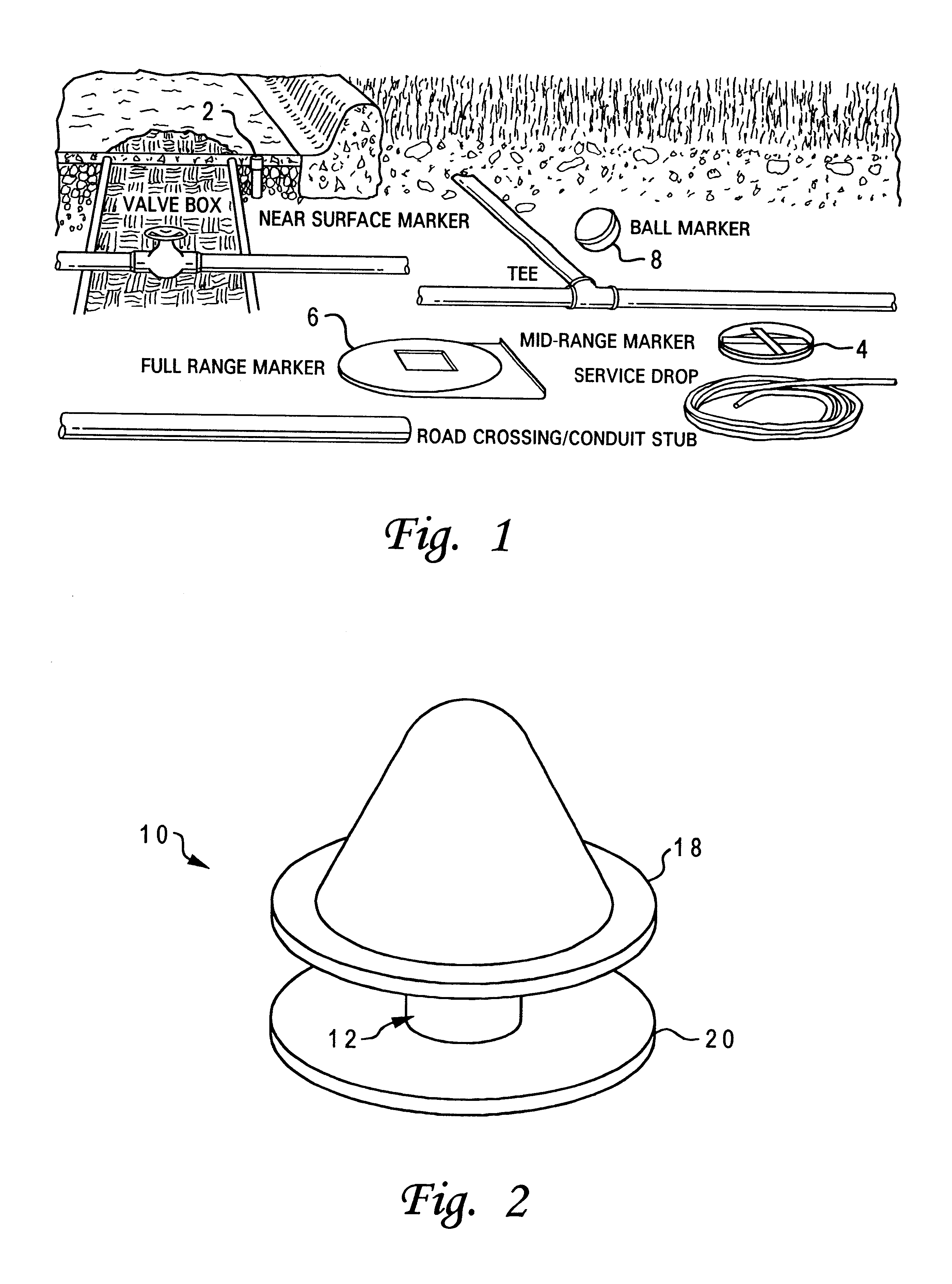Buried closure guard with electronic marker
a technology of electronic markers and closure guards, applied in the field of guards or shields, can solve the problems of inability to detect surface instruments, inconvenient installation, and inability to use reradiation,
- Summary
- Abstract
- Description
- Claims
- Application Information
AI Technical Summary
Problems solved by technology
Method used
Image
Examples
Embodiment Construction
With reference now to the figures, and in particular with reference to FIGS. 2 and 3, there is depicted one embodiment of a detectable transponder reel housing 10 constructed in accordance with the present invention. Housing 10 is generally comprised of a hub or core portion 12 defining a cylindrical wall 14 about which cabling 16 may be wound, and two discs or plates 18 and 20 which confine the cabling 16 about hub 12. Plates 18 and 20, and hub 12, may be constructed of any durable material, and are preferably integrally formed using injection molding of a polymer such as polyester or high-density polyethylene, or some polymeric blend.
Cabling 16 constitutes a service drop which can be used to provide for timely availability of cable for power, television, or telecommunications (telephony). Utility construction crews typically bury 50 to 150 feet of cable at a property line for future service hook-up for a residence or commercial establishment, so housing 10 is adapted to retain suc...
PUM
 Login to View More
Login to View More Abstract
Description
Claims
Application Information
 Login to View More
Login to View More - R&D
- Intellectual Property
- Life Sciences
- Materials
- Tech Scout
- Unparalleled Data Quality
- Higher Quality Content
- 60% Fewer Hallucinations
Browse by: Latest US Patents, China's latest patents, Technical Efficacy Thesaurus, Application Domain, Technology Topic, Popular Technical Reports.
© 2025 PatSnap. All rights reserved.Legal|Privacy policy|Modern Slavery Act Transparency Statement|Sitemap|About US| Contact US: help@patsnap.com



